A journey from the sea to the mountains
From the beautiful ocean to sacred mountains, Wakayama is an underrated gem and a less traveled destination compared to its neighboring cities of Osaka, Kyoto and Nara. Wakayama City is just an hour south of central Osaka and Kansai International Airport, and can be accessed by Japan Railways and Nankai Railway as well as by bus.
There are many interesting and historical sights in Wakayama Prefecture, and on this trip, I spent three days starting in the prefectural city located along the coast and moved inland towards Koyasan, a sacred place in the mountains. My trip in Wakayama was filled with lots of learning experiences and scenic sights. I was glad to have this opportunity to explore this lesser-known city, and highly recommend it to those who want to experience a different side of Japan, away from the neighboring crowded destinations of Osaka and Kyoto.
Day 1: Wakayama City
Public transport like trains and local buses is available to get around in Wakayama City, but because the sights are spread out it can be time-consuming to get around. As such, it is worth considering alternatives like taxis and shared bicycles, which can be booked via the GO and Hello Cycling apps respectively, which are available in multiple languages, and sightseeing taxis.
My hotel, the Hotel Granvia Wakayama is just steps from Wakayama Station on the JR Wakayama Line, and I dropped off my bag there before exploring the city.


Wakayama served as the seat of the Kishu clan, one of the three major branches of the ruling Tokugawa family. From the early 1600s till the late 1800s, the Kishu clan governed present-day Wakayama Prefecture from Wakayama Castle. The castle grounds are situated on a hill in the city center, with the main castle keep at the top, and the palace buildings and administrative offices - which no longer stand - at the bottom.
To get to the castle keep, I walked through a garden at the bottom of the hill. Aptly named Momijidani Garden, there are many maple (momiji) trees whose leaves provide nice autumn colors in the fall. The garden was where the former lord relaxed, and connects to the area where the palace buildings and administrative offices were located via a unique covered wooden bridge, which was reconstructed based on its original design.


Wakayama Castle's main keep is one of only a few in Japan, which consists of multiple interconnected structures, including a large tower, a small tower and two turrets, connected with each other by corridors, forming some kind of inner courtyard in the middle. Other castles in Japan sporting the same interconnected design include Himeji Castle, a national treasure, as well as Matsuyama Castle.
The interior of the castle is now a museum displaying armor and weapons from the feudal period, while the top floor is an observation deck from where nice views of Wakayama City can be had.




From the castle, I made my way to Bandoko Garden, a former coast guard station. During the feudal period, the Kishu clan had to protect their land which borders the water from intruders. It was prudent to have coast guard stations along the coast identifying unfamiliar ships and defending against enemy attacks from the water. Bandoko Garden is approximately five kilometers from Wakayama Castle as the crow files, and the closest and important one to signal the presence of enemies.
Today, the Bandoko Garden is a place to enjoy the sea without having to worry about enemy attacks. Visitors can enjoy panoramic coastal views, go fishing and rent cabanas for barbecues. I was very impressed with Bandoko Garden, and it was definitely the underdog of the sights in Wakayama City for me.

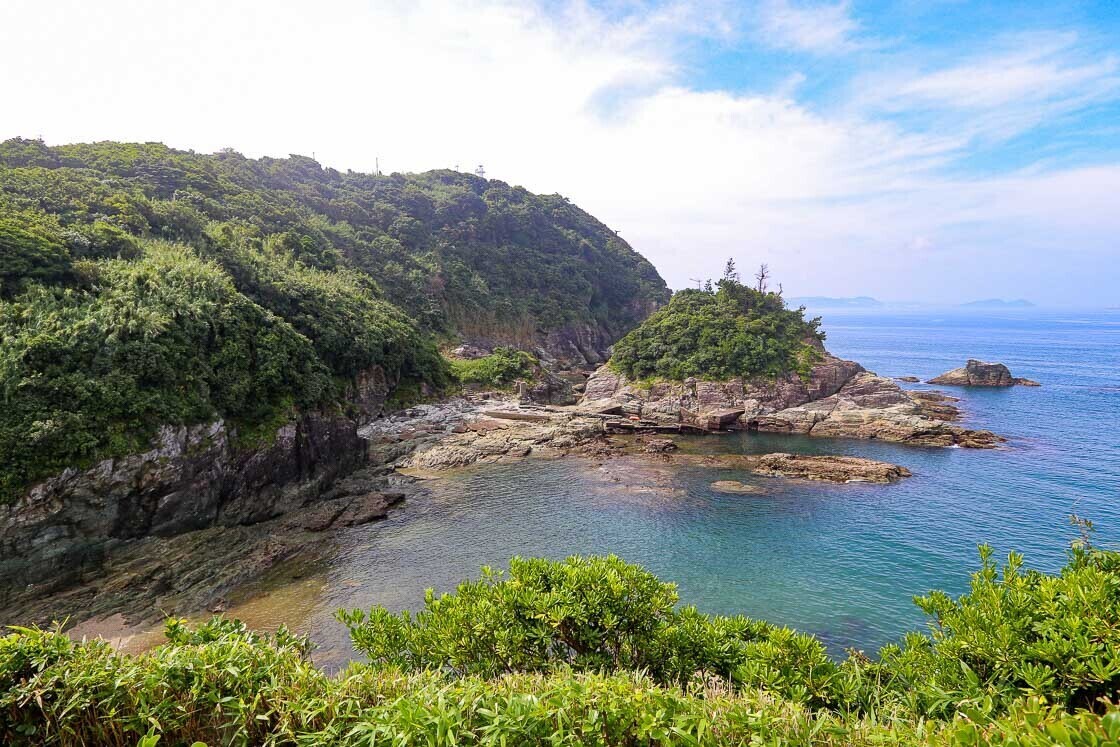
Not far from Bandoko is the area known as Wakanoura, which has long been known as a place of scenic beauty. It is said that seeing the beauty of Wakanoura causes the viewer to feel and see the spirit of emotions, and through that process springs forth the expressions of feelings in words. Consequently, poems extolling the beauty of Wakanoura can be found in Japan's earliest written records, and today, the area continues to inspire with its beauty.
Dedicated to the deified spirit of Sugawara Michizane, a scholar and politician in the 9th century during the Heian Period, Wakaura Tenmangu Shrine sits atop a hill in Wakanoura. It is said that when Sugawara Michizane was on his way to Dazaifu, where he was exiled to from Kyoto, he stopped over in Wakanoura due to stormy seas and penned two poems. An impressive flight of stone steps lead up to a beautiful gate, and beyond that is the main hall. As Michizane is associated with the Shinto deity of education, the shrine sees many students praying for scholarly success during the exam season.



As the seat of Kishu Tokugawa clan, Wakayama City is naturally also home to a Toshogu shrine - the Kishu Toshogu Shrine. There are several dozens of Toshogu shrines found across Japan, all dedicated to the spirit of Tokugawa Ieyasu, the founder of the Tokugawa Shogunate.
A flight of 108 steps lead to the main hall at Kishu Toshogu Shrine. Known as Samurai-zaka, the steps are said to correspond to the 108 worldly passions like hate, desire and anger. A world passion is left behind with each step taken to the top, and visitors who make the ascent will arrive clean and purified.
The highlight for me was seeing the main hall, which is covered in intricate carvings and bright bold colors. The building was completed in 1621, a few years after Nikko Toshogu, not far from Tokyo and the most well-known of all Toshogu shrines that is decorated in a similar fashion, was completed. As such, Kishu Toshogu is sometimes referred to as the "Nikko of the West".

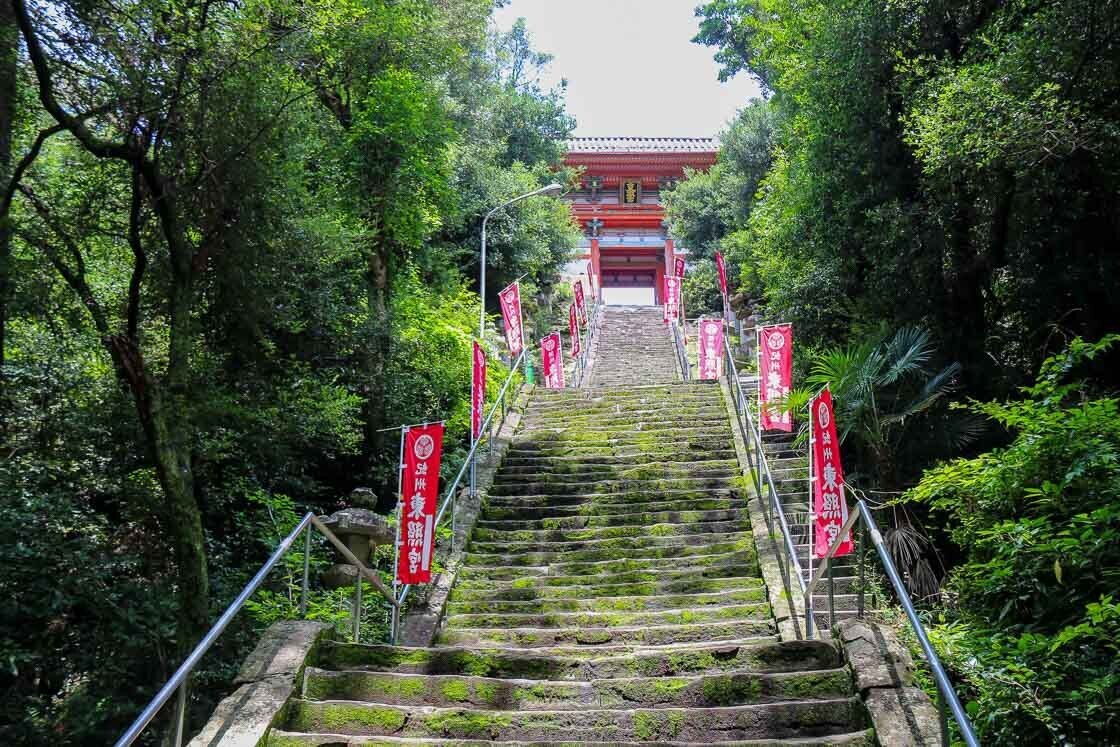


After visiting two places with steep flights of steps, I made my way towards the water front. Tamatsushima Shrine, which was established in the early 8th century, has the longest history in Wakanoura compared to both Wakaura Tenmangu and Kishu Toshogu. The female deities enshrined there are said to bring good fortunes and growth to the careers of worshipers.
Built into a boulder on the perimeter of Tamatsushima Shrine is Shiogama Shrine, a local shrine known for the protection of fishermen and safe childbirth. Historically, however, Shiogama Shrine was where pilgrims would cleanse and purify themselves before continuing to Tamatsushima Shrine.




After visiting the last of the major shrines and temples in Wakaura, I returned to central Wakayama for dinner at Chihiro, an elegant restaurant with a focus on seasonal cuisine and local ingredients. One of the specialties that requires advance reservation at Chihiro is the Kishu Tokugawake Kenjoryori, a historical meal consisting of a multitude of dishes served to the feudal lord.
A written record of the menu served to the feudal lord was found in a nearby temple, and Chihiro has used that menu to make an inspired version consisting of a selection of dishes featuring the best of Wakayama's finest ingredients. It was the first time for me to eat such a meal, and I was just blown away by the complexity of the flavors, which have been adjusted to suit the modern palate.
I was glad that my hotel was a short walk from the restaurant that sumptuous meal, and I was ready to wind down for the day.


Day 2: Kudoyama Town
After a day out in the coastal city of Wakayama, I checked out of my hotel and took a 45 minute taxi ride to Kudoyama, a historical town at the base of the mountain closely associated with the temple of Koyasan since its establishment. As I knew I would be hiking, I made sure that I only carried the necessities and used a luggage forwarding service to send my luggage ahead of me.
In 817, Kobo Daishi, the founder of Shingon Buddhism started the construction of Koyasan, a monastery for meditation. It was said that his mother journeyed to Koyasan as she wanted to see the monastery that he had established. However, at that time, Koyasan was off-limits to women as it was the central place for Buddhist studies, and she was unable to go and thus settled at the base of the mountain. Kobo Daishi, being a filial child, would descend from Koyasan nine times a month to visit his mother, which resulted in the area being referred to as Kudoyama - kudo means nine times and yama means mountain.
My taxi driver dropped me off at Jisonin, a temple dedicated to Kobo Daishi's mother and where women pilgrims prayed for safe childbirth, pregnancy and good child-rearing. The temple is also the start of the historical Choishimichi pilgrimage route that leads to Koyasan. It takes 6 to 7 hours to hike from Jisonin Temple to Koyasan, but there is a shorter alternative that covers the last third of the hike and takes 2 to 3 hours, which was the section I planned to hike.




After looking around Jisonin, I walked to the near by Kudoyama Michinoeki rest area to use the public facilities and pick up some provisions for my upcoming hike. There is a small museum at the rest area outlining the Choishimichi hiking route with displays about Koyasan, which I found interesting to see before getting started.






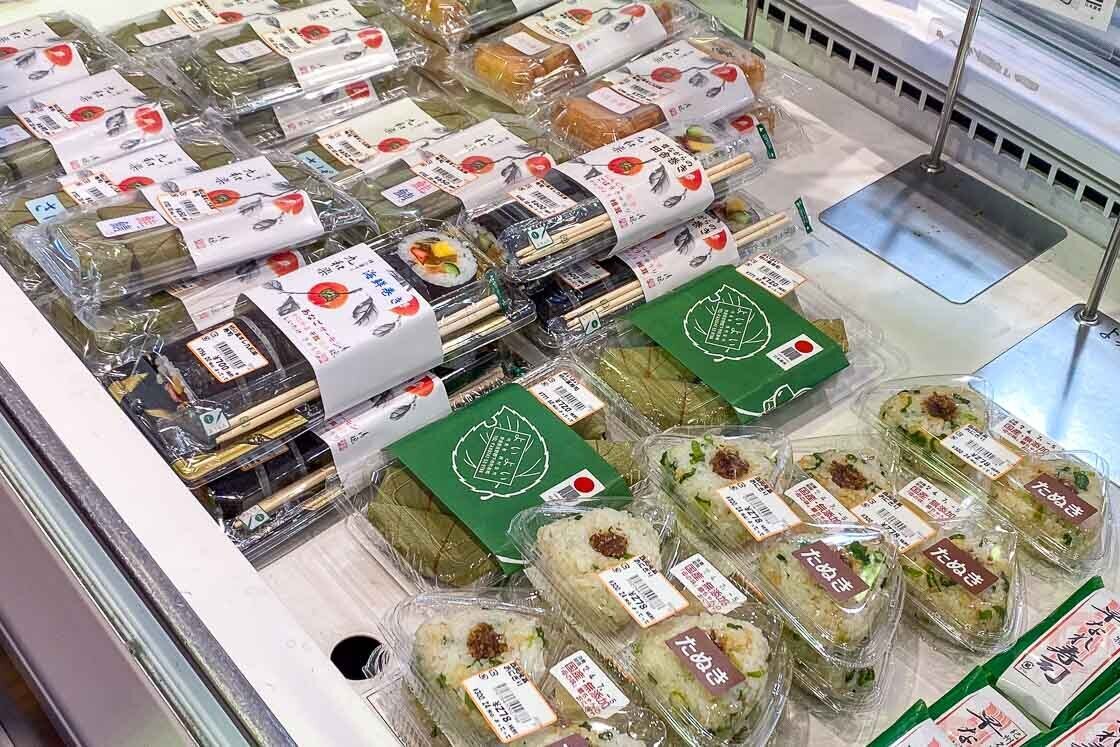
Then, it was time to walk to Kudoyama Station from where I would catch the train to Kii-Hosokawa Station. It is an approximately 40 minute walk from the station to the Choishimichi trail. The historical trail, which was used by pilgrims over a millennium ago, is lined by stone markers known as Choishi.
Cho is a unit of measurement that is equivalent to 109 meters and these markers are placed in intervals of 109 meters all the way to the top. They also represent the five elements with space at the top, then wind, fire, water and earth at the bottom.

I started my hike a little apprehensive, wondering if I would be able to find my way or if I would have the stamina to hike all the way. But, I found the presence of the stone markers to be both an encouragement and a guide. It was very reassuring to see a marker whenever the self-doubts started creeping in. Before I knew it, the massive Daimon gate - the traditional entrance to Koyasan - loomed ahead of me.
I was grateful to see the Daimon gate, and pressed on towards my accommodation for the night. One of the ways to fully experience Koyasan is to stay overnight at a temple lodging and participate in the simple lifestyle of Buddhist monks. I stayed at Rengejoin Temple, and there was a short meditation session led by the head priest before dinner.


Part of the experience of staying at a temple lodging is eating Buddhist vegetarian cuisine. Unlike dinner the day before, where I indulged in a meal fit for a feudal lord, temple cuisine is more modest, but no less flavorful. The vegetables were skillfully simmered in a broth typically made with seaweed, mushrooms and soy beans, and my meal also included sesame tofu, a Koyasan specialty.
I returned to my room after dinner and was soon lulled into a restful sleep.

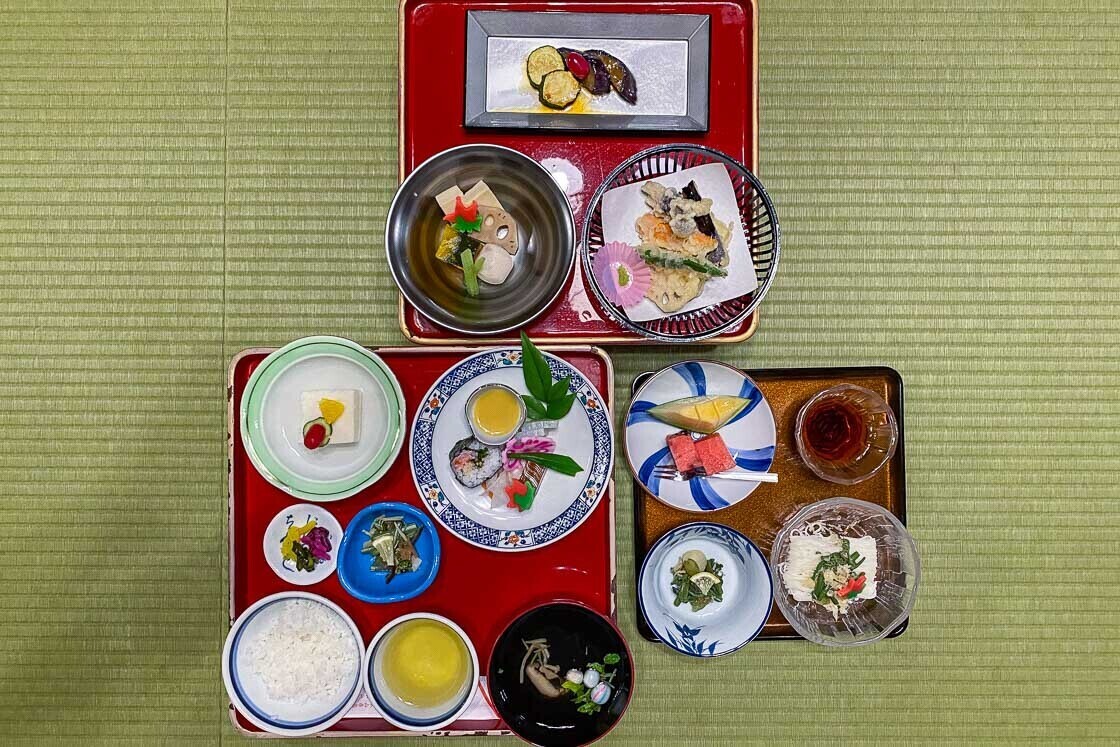

Day 3: Koyasan
Attending a morning ceremony is another aspect of life in Koyasan, and a bell is rung five minutes before they start so that guests know that it is time to assemble at the prayer hall. It is not compulsory for guests to attend morning ceremony, but many do as part of the temple experience. Prayers for the dead are offered in the morning, and guests are invited to offer incense as well.
Breakfast follows the morning ceremony, after which guests can relax until it is time to check out. I headed for Okunoin, one of the most sacred places in Japan after leaving the temple lodging. Okunoin is one of the most famous pilgrimage sites in Japan, and it is an approximately 30 minute walk from the start of Okunoin to Kobo Daishi's mausoleum, a distance that spans about two kilometers and flanked by countless of memorial towers.
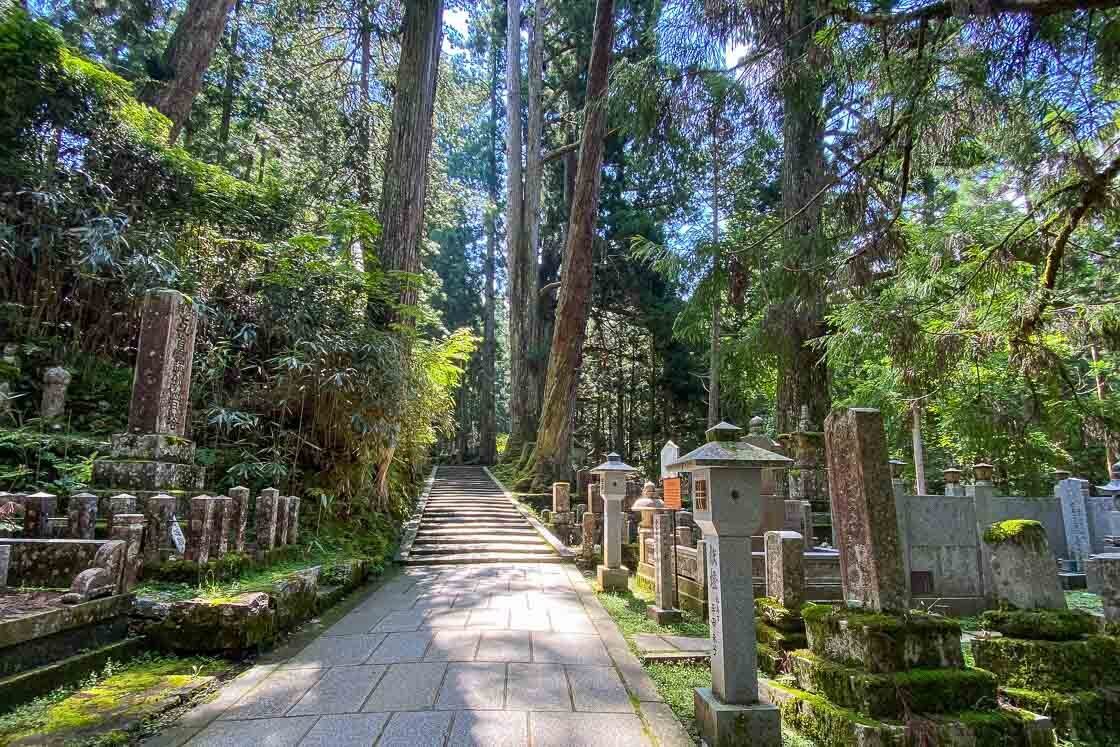


Continuing my tour of Koyasan after visiting Okunoin, I retraced my steps in the direction of the Daimon gate to the Garan, Koyasan's central temple complex. This area was where Kobo Daishi first started work to build Koyasan, making it the other most sacred place on the mountain, aside from Okunoin.
Here, the size of the structures dwarf humans, and the most striking of them all is the vermilion Konpon Daito Pagoda, which is a physical representation of a mandala - a symbolic image of the universe. Reconstructed in 2015 on the occasion of the 1200th anniversary of the establishment of Koyasan, the Chumon gate is also another impressive structure in the Garan area.
It was soon time for me to leave Koyasan, and I left with a full spiritual tank. From the sea to the mountains, it was indeed a fulfilling trip to Wakayama immersing myself in history and culture. I am already looking forward to my next dive into Wakayama's other hidden gems.




Those who are in the metaverse can also explore Wakayama virtually. The city is recreated in Fortnite, and the main sightseeing attractions in Wakayama Prefecture can be explored in virtual 3D spaces. Find out more about Metaverse Wakayama from this link.
This article was sponsored by YUTAKA COMMUNICATIONS Co., Ltd.
